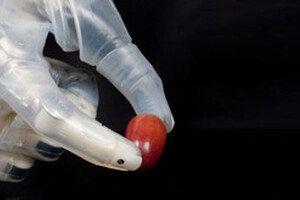
DEKA is transforming upper-limb prosthetics and helping to improve the quality of life for amputees. From science fiction to medical fact. Driven by science. Inspired by science fiction. Enabled by innovation. Supported by Analog Devices. This is the Luke arm, named for Luke Skywalker’s prosthetic arm from Star Wars: the Empire Strikes Back*, and made real by the engineering minds at DEKA Research and Development Corp.
Luke is the most advanced prosthetic arm approved by the FDA that can perform highly complex tasks; and it is a transformative innovation in upper-limb prosthetics.
A challenge centuries in the making
The US government’s Defense Advanced Research Projects Agency (DARPA) approached DEKA with an ambitious goal: design a prosthetic arm with the functionality of a natural limb. Many current prostheses are based on designs which were pioneered over 100 years ago. DARPA wanted an alternative that changed the game; a solution that could dramatically improve the quality of life for amputees; a solution that was delicate enough to pick up a grape, yet rugged enough to handle tools such as a hand drill.
ADI is proud to deliver the trusted, high-performance technology to help make DEKA’s revolutionary innovation possible. Multiple ADI components – including instrumentation amps, digital isolators, dual op-amps and many more – were integrated into a design that answered DARPA’s challenge.
Innovative. Transformative
What makes the DEKA Arm unique is that it can carry out multiple, simultaneous powered movements, and its wrist and fingers can adjust its positions to perform multiple different user-selectable grips. In addition, force sensors in the hand let the user of the arm precisely control the grasp.
The DEKA Arm has similar size and weight to a natural limb, and can be controlled by a variety of control inputs. For example, the arm can be controlled by electromyogram (EMG) electrodes, which sense electrical activity on muscles close to where the prosthesis is attached. A computer on the prosthesis receives the EMG signals and interprets them to make fingers open or close, or change the grip configuration to let the user pick up a coin, for example. To perform the complex movements DEKA wanted, the engineers realized they needed additional control inputs. Their solution: special sensors on the user's feet. These sensors wirelessly transmit signals to the arm's computer, allowing the user to control multiple joints simultaneously.
It’s an innovation that is truly transforming the lives of those who are touched by it. Clinical studies have shown that 90 percent of users were able to perform complex tasks with the DEKA Arm that they were not able to perform with their existing prosthesis. It’s ahead of what’s possible – and it’s only the beginning.
